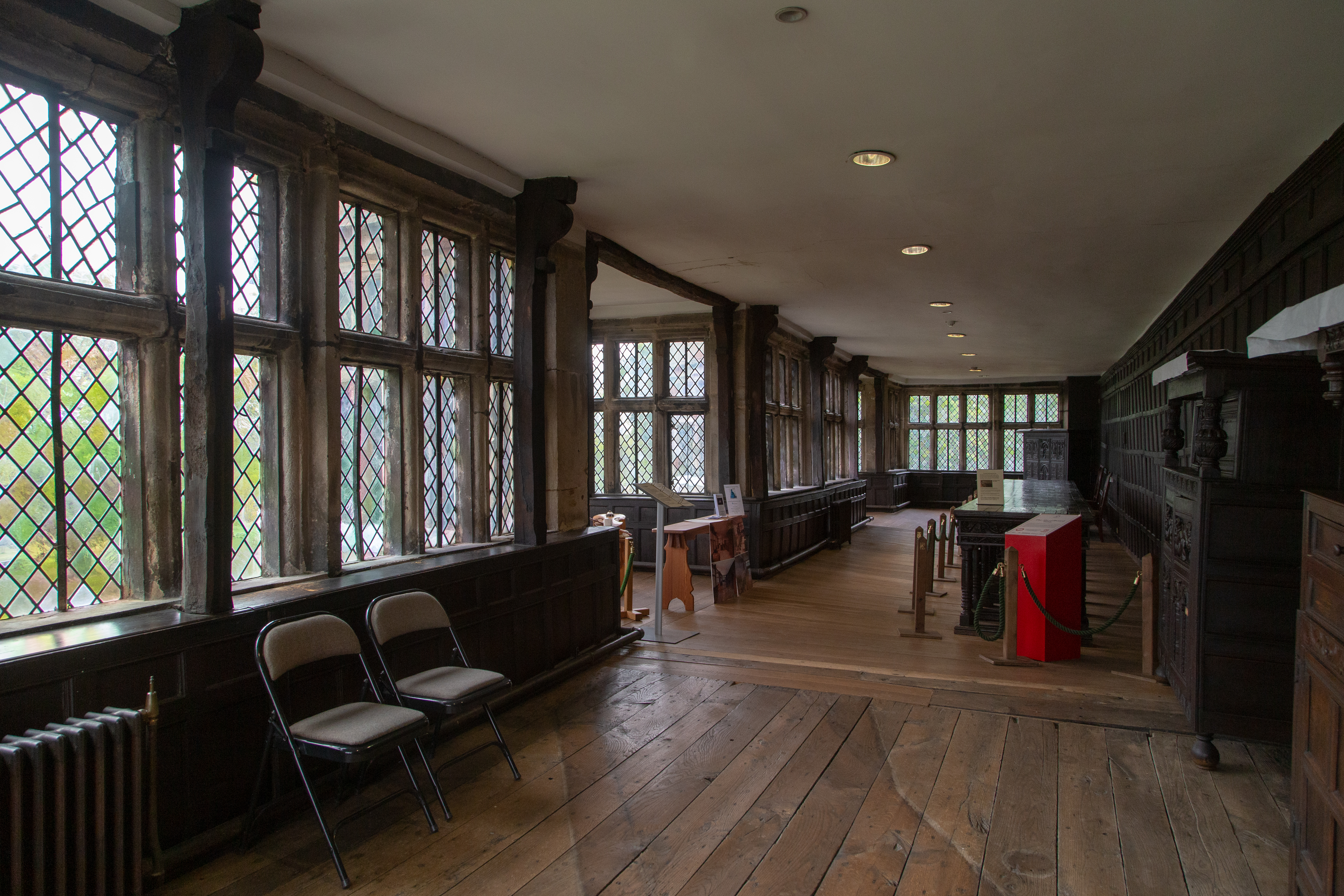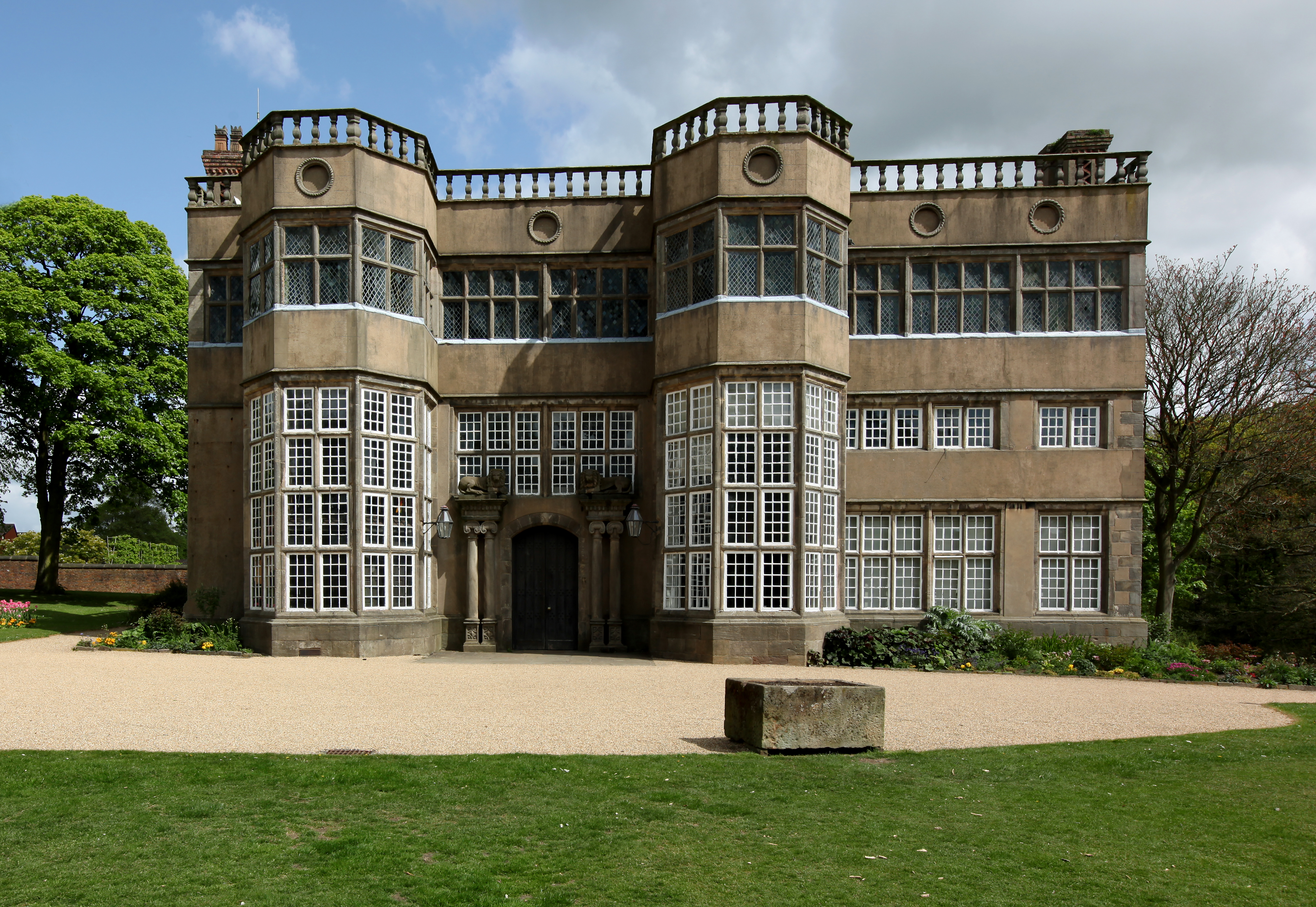Long Gallery on:
[Wikipedia]
[Google]
[Amazon]


 In
In  Later, long galleries were built, sometimes in a revivalist spirit, as at
Later, long galleries were built, sometimes in a revivalist spirit, as at


 In
In architecture
Architecture is the art and technique of designing and building, as distinguished from the skills associated with construction. It is both the process and the product of sketching, conceiving, planning, designing, and constructing building ...
, a long gallery is a long, narrow room, often with a high ceiling. In Britain, long galleries were popular in Elizabethan and Jacobean houses. They were normally placed on the highest reception floor of English country house
An English country house is a large house or mansion in the English countryside. Such houses were often owned by individuals who also owned a town house. This allowed them to spend time in the country and in the city—hence, for these peopl ...
s, usually running along a side of the house, with windows on one side and at the ends giving views, and doors to other rooms on the other. They served several purposes: they were used for entertaining guests, for taking exercise in the form of walking when the weather was inclement, for displaying art collections, especially portraits of the family and royalty, and acting as a corridor.
A long gallery has the appearance of a spacious corridor, but it was designed as a room to be used in its own right, not just as a means of passing from one room to another, though many served as this too. In the 16th century, the seemingly obvious concept of the corridor had not been introduced to British domestic architecture; rooms were entered from outside or by passing from one room to another.
 Later, long galleries were built, sometimes in a revivalist spirit, as at
Later, long galleries were built, sometimes in a revivalist spirit, as at Harlaxton Manor
Harlaxton is a village and civil parish in the South Kesteven district of Lincolnshire, England. It lies on the edge of the Vale of Belvoir and just off the A607, south-west from Grantham and north-east from Melton Mowbray.
History
A ...
, an extravagant early-Victorian house in Jacobean style, and sometimes to house a large art collection, as at Buckingham Palace
Buckingham Palace () is a London royal residence and the administrative headquarters of the monarch of the United Kingdom. Located in the City of Westminster, the palace is often at the centre of state occasions and royal hospitality. It ...
, which has a long interior space lit from above, called the Picture Gallery.
Examples
Notable long galleries in the United Kingdom can be seen at: *Althorp
Althorp (popularly pronounced ) is a Grade I listed stately home and estate in the civil parish of Althorp, in West Northamptonshire, England of about . By road it is about northwest of the county town of Northampton and about northwest of ...
, Northamptonshire
* Apethorpe Hall
Apethorpe Palace (pronounced ''Ap-thorp'', formerly known as "Apethorpe Hall", "Apethorpe House", "Apthorp Park" or "Apthorp Palace" ) in the parish of Apethorpe, Northamptonshire, England, is a Grade I listed country house dating back to the ...
, Northamptonshire
* Aston Hall
Aston Hall is a Grade I listed Jacobean house in Aston, Birmingham, England, designed by John Thorpe and built between 1618 and 1635. It is a leading example of the Jacobean prodigy house.
In 1864, the house was bought by Birmingham Corpor ...
, Birmingham
*Astley Hall, Chorley
Astley Hall is a country house in Chorley, Lancashire, England. The hall is now owned by the town and is known as Astley Hall Museum and Art Gallery. The extensive landscaped grounds are now Chorley's Astley Park.
History
The site was acquir ...
* Blickling Hall
Blickling Hall is a Jacobean stately home situated in 5,000 acres of parkland in a loop of the River Bure, near the village of Blickling north of Aylsham in Norfolk, England. The mansion was built on the ruins of a Tudor building for Sir Henry ...
, Norfolk
* Burghley House, near Stamford, Lincolnshire
* Broughton Castle
Broughton Castle is a medieval fortified manor house in the village of Broughton, which is about two miles south-west of Banbury in Oxfordshire, England, on the B4035 road (). It is the home of the Fiennes (in full Twisleton-Wykeham-Fiennes) ...
, Oxfordshire
* Burton Agnes Hall, Yorkshire
* Burton Constable Hall
Burton Constable Hall is a large Elizabethan country house in England, with 18th- and 19th-century interiors and a fine 18th-century cabinet of curiosities. The hall, a Grade I listed building, is set in a park designed by Capability Brown ...
, Yorkshire
* Castle Ashby House
Castle Ashby House is a country house at Castle Ashby, Northamptonshire, England. It is one of the seats of the Marquess of Northampton. The house, church, formal gardens and landscaped park are Grade I listed.
The original castle, a manor h ...
, Northamptonshire, now 18th-century in style.
* Charlton House
Charlton House is a Jacobean building in Charlton, within the Royal Borough of Greenwich in south-east London. Originally it was a residence for a nobleman associated with the Stuart royal family. It later served as a wartime hospital, then ...
, London
* Croome Court
Croome Court is a mid-18th-century Neo-Palladian mansion surrounded by extensive landscaped parkland at Croome D'Abitot, near Upton-upon-Severn in south Worcestershire, England. The mansion and park were designed by Lancelot "Capability" Brown for ...
, Worcestershire, Adam interior
* Haddon Hall
Haddon Hall is an English country house on the River Wye near Bakewell, Derbyshire, a former seat of the Dukes of Rutland. It is the home of Lord Edward Manners (brother of the incumbent Duke) and his family. In form a medieval manor house, it ...
, Derbyshire
* Ham House
Ham House is a 17th-century house set in formal gardens on the bank of the River Thames in Ham, south of Richmond in the London Borough of Richmond upon Thames. The original house was completed in 1610 by Thomas Vavasour, an Elizabethan cou ...
, London – compact and running from front to rear
* Hardwick Hall
Hardwick Hall in Derbyshire is an architecturally significant country house from the Elizabethan era, a leading example of the Elizabethan prodigy house. Built between 1590 and 1597 for Bess of Hardwick, it was designed by the architect ...
, Derbyshire – one of the largest
* Harewood House
Harewood House ( , ) is a country house in Harewood, West Yorkshire, England. Designed by architects John Carr and Robert Adam, it was built, between 1759 and 1771, for Edwin Lascelles, 1st Baron Harewood, a wealthy West Indian plantation ...
* Harlaxton Manor
Harlaxton is a village and civil parish in the South Kesteven district of Lincolnshire, England. It lies on the edge of the Vale of Belvoir and just off the A607, south-west from Grantham and north-east from Melton Mowbray.
History
A ...
,
* Hatfield House
Hatfield House is a country house set in a large park, the Great Park, on the eastern side of the town of Hatfield, Hertfordshire, England. The present Jacobean house, a leading example of the prodigy house, was built in 1611 by Robert Cec ...
, Hertfordshire
* Little Moreton Hall
Little Moreton Hall, also known as Old Moreton Hall, is a moated half-timbered manor house southwest of Congleton in Cheshire, England. The earliest parts of the house were built for the prosperous Cheshire landowner William Moreton in abo ...
, Cheshire
* Longleat House
Longleat is an English stately home and the seat of the Marquesses of Bath. A leading and early example of the Elizabethan prodigy house, it is adjacent to the village of Horningsham and near the towns of Warminster and Westbury in Wilts ...
, Wiltshire – the long gallery is now called the Saloon
* Lyme Park
Lyme Park is a large estate south of Disley, Cheshire, England, managed by the National Trust and consisting of a mansion house surrounded by formal gardens and a deer park in the Peak District National Park. The house is the largest in Ches ...
, Cheshire
* Montacute House
Montacute House is a late Elizabethan era, Elizabethan mansion with a garden in Montacute, South Somerset.
An example of English architecture during a period that was moving from the medieval Gothic to the Renaissance Classical, and one of fe ...
, Somerset
* Osterley Park
Osterley Park and House is a Georgian country estate in west London, that straddles the London boroughs of Ealing and Hounslow. Originally dating from the 1570s, the estate contains a number of Grade I and II listed buildings, with the park ...
, London
* Scone Palace
Scone Palace is a Category A-listed historic house near the village of Scone and the city of Perth, Scotland. Built in red sandstone with a castellated roof, it is an example of the Gothic Revival style in Scotland.
Scone was originally the s ...
, Perthshire
* Sudbury Hall
Sudbury Hall is a country house in Sudbury, Derbyshire, England. One of the country's finest Restoration mansions, it has Grade I listed building status.
The National Trust Museum of Childhood is housed in the 19th-century servants' wing of Sud ...
, Derbyshire
* Syon House, London
* Temple Newsam House
Temple Newsam (historically Temple Newsham), () is a Tudor- Jacobean house in Leeds, West Yorkshire, England, with grounds landscaped by Capability Brown.
The estate lends its name to the Temple Newsam ward of Leeds City Council, in which it ...
, Yorkshire – Jacobean long gallery, later modified and now called the picture gallery
* Welbeck Abbey
Welbeck Abbey in the Dukeries in North Nottinghamshire was the site of a monastery belonging to the Premonstratensian order in England and after the Dissolution of the Monasteries, a country house residence of the Dukes of Portland. It is o ...
* Windsor Castle
Windsor Castle is a royal residence at Windsor in the English county of Berkshire. It is strongly associated with the English and succeeding British royal family, and embodies almost a millennium of architectural history.
The original c ...
– Elizabethan long gallery; later converted by William IV
William IV (William Henry; 21 August 1765 – 20 June 1837) was King of the United Kingdom of Great Britain and Ireland and King of Hanover from 26 June 1830 until his death in 1837. The third son of George III, William succeeded h ...
, along with adjacent rooms, to house the Royal Library
References
Further reading
* The 'Long Gallery': Its Origins, Development, Use and Decoration by Rosalys Coope in Architectural History, Vol. 29, 1986 (1986), pp. 43–72+74-84 * {{Room Architectural elements Rooms Architecture in England